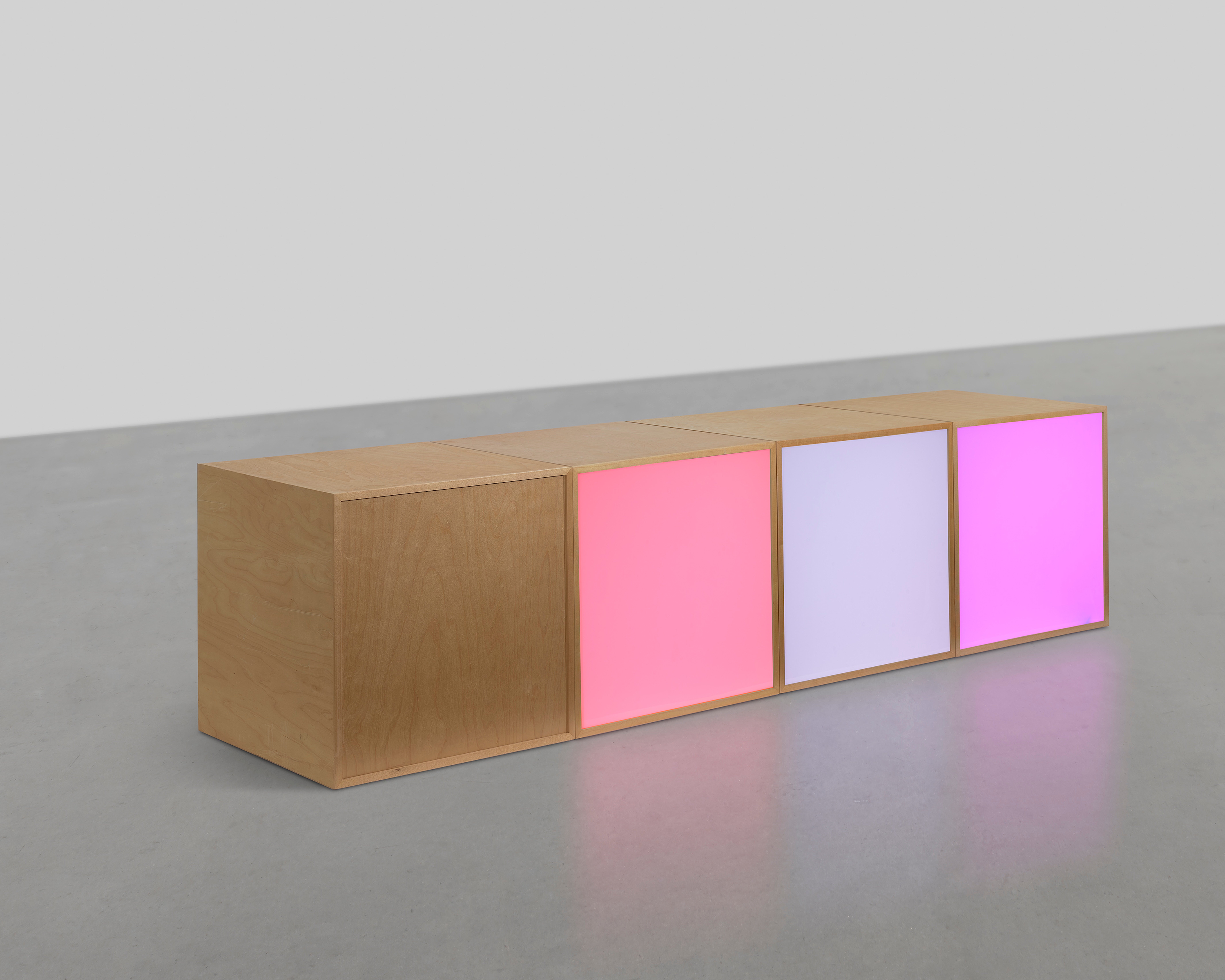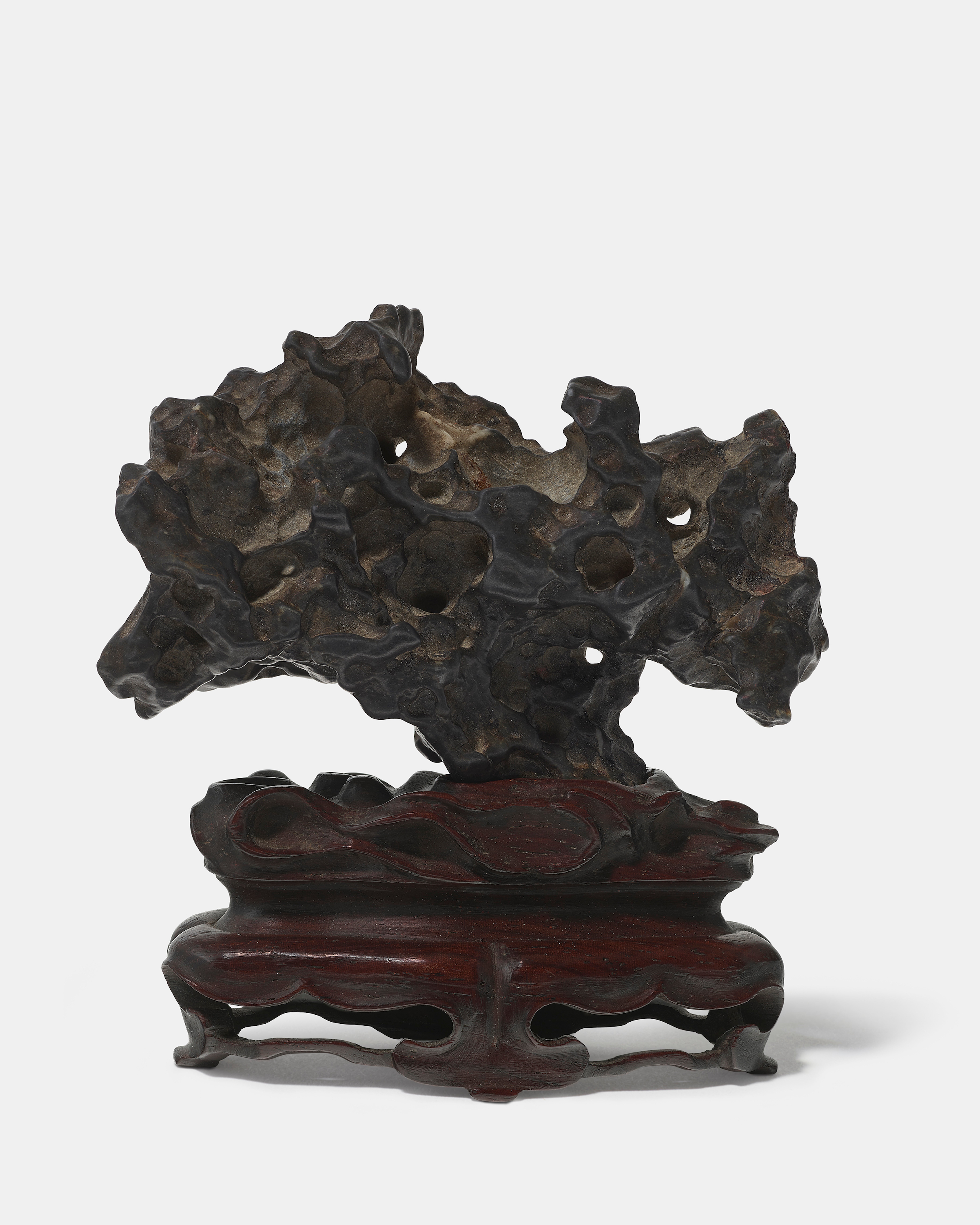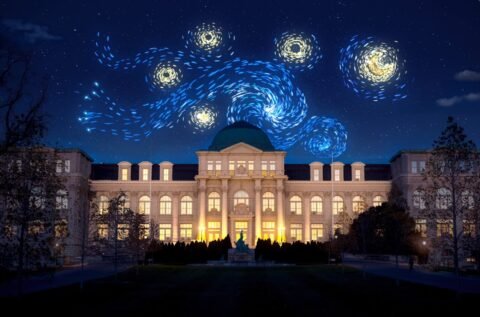Things have gone pretty quiet at Damien Hirst’s Newport Street Gallery. The last time I visited the free exhibition space in Vauxhall was in 2022 for the infamous “burn event” at which international media gathered to watch Hirst – once the world’s wealthiest artist, behind headline-making pieces such as a diamond-encrusted human skull – feed £10m worth of small paintings from his first non-fungible token (NFT) collection into an oven.
The fact that the bottom dropped out of the market in NFT almost immediately afterwards has rather got lost in the mists of time – but the fact remains that Newport Street, which opened in 2015 as a showcase for Hirst’s personal art collection, has generated so little brouhaha over the past year that one would be forgiven for thinking it had closed.
The handsome space, converted from a Victorian scenery-painting workshop, was almost eerily quiet the day I attended two new exhibitions curated by Hirst’s son, Connor. The 30-year-old has previously put together shows of his father’s work. “Dominion”, seen at Newport Street last summer, was a fairly straightforward greatest hits of his dad’s holdings (Koons, Emin, Marcus Harvey et al), while “The Civilisation Paintings” at Phillips auction house, also last year, comprised entirely new Hirst works. The current shows, however, “Raging Planet” and “The Power and the Glory”, focus on the more niche allures of the Hirst collection.
On the ground floor, “Raging Planet” spotlights artists whose work incorporates “chaos that is the essential characteristic of the natural world”. If that sounds all too typically Hirst, there’s as much emphasis here on the balancing order of nature as there is on its nasty, destructive aspects. Mexican artist Bosco Sodi coats his paintings in mixtures of pigment, sawdust, glue and “other organic materials” so that their surfaces rise and fracture as they dry, evoking both earthquake-riven landscapes and gigantic primary-coloured cakes. If the densely textured ultramarines of Organic Blue (2010) look positively toxic, Untitled (2010) with its rich reds and yellows appears as though it should be sliced up and served at teatime.
Elsewhere, Roger Hiorns’ found objects (everything from car engines to models of Chartres cathedral) encrusted in blue copper sulphate crystals recall his best-known work, Seizure, in which a London council flat was flooded with 75,000 litres of the chemical, turning it into a glittering blue cave that attracted vast numbers of visitors back in 2008. Far from an example of chaos, however, this spectacle was precisely what any half-competent scientist would have foreseen. Yet 17 years on, Hiorns’ sparkling automotive body parts still make quite the impact, positioned around the gallery like surreal idols.

Hirst’s fellow YBA (Young British Artist) Keith Tyson produces even more seductive results by tipping what’s described as “various paints, pigments, resins and catalysts” over panels of acid-primed aluminium. The magma-like oozings merge with what looks like creamy gloss paint, creating cosmic-psychedelic textures, which seem to open up a portal to deep space.
The chaos idea feels further removed in a room of minimalist colour-based works, with ethereal airbrushed paintings by British artist Oliver Marsden. Angela Bulloch’s elegant plywood cubes, with their changing colours radiating from within, ostensibly represent pixels – though I’m not sure how – to reflect the Canadian’s obsession with “systems and rules”. Both artists work within the classic Western colour spectrum, which, far from representing the chaos of nature, is an entirely human-devised construct.

There’s a more provocative juxtaposition of the creative and destructive capacities of nature in the upstairs exhibition, “The Power and the Glory”. Photographs of post-war nuclear tests are arranged around groups of “scholars’ stones” or gongshi, which are intricately weathered lumps of stone that have been used as objects for contemplation in China for millennia. Ranging from palm-sized to monumental, their often mindbendingly complex forms resemble the ghostly, incandescent shapes of nuclear mushroom clouds more frequently than you’d imagine. If the idea might sound a touch glib, the cumulative effect is hypnotically compelling. Oh yes! Beauty and horror, creation and destruction: it’s all so… Damien Hirst. Young Connor may have brought these elements together, but who acquired them in the first place? Whether they were purchased in dribs and drabs, or through wholesale acquisition of existing collections, we aren’t told, but one way or another this feels like a surrogate Damien Hirst exhibition.
As I sit alone in the gallery’s long-closed restaurant, once tipped to be one of London’s great eateries, availing myself of the free tea and biscuits provided for visitors, there’s a sense of the end of an era. Yet that atmosphere, while poignant, feels more than a little knowing. Whatever the immediate future of the Newport Street Gallery, I’ll wager that the final episode of this particular art world drama won’t be upon us for a good while yet.
‘Raging Planet’ and ‘The Power and the Glory’ at Newport Street Gallery, London until 31 August 2025





